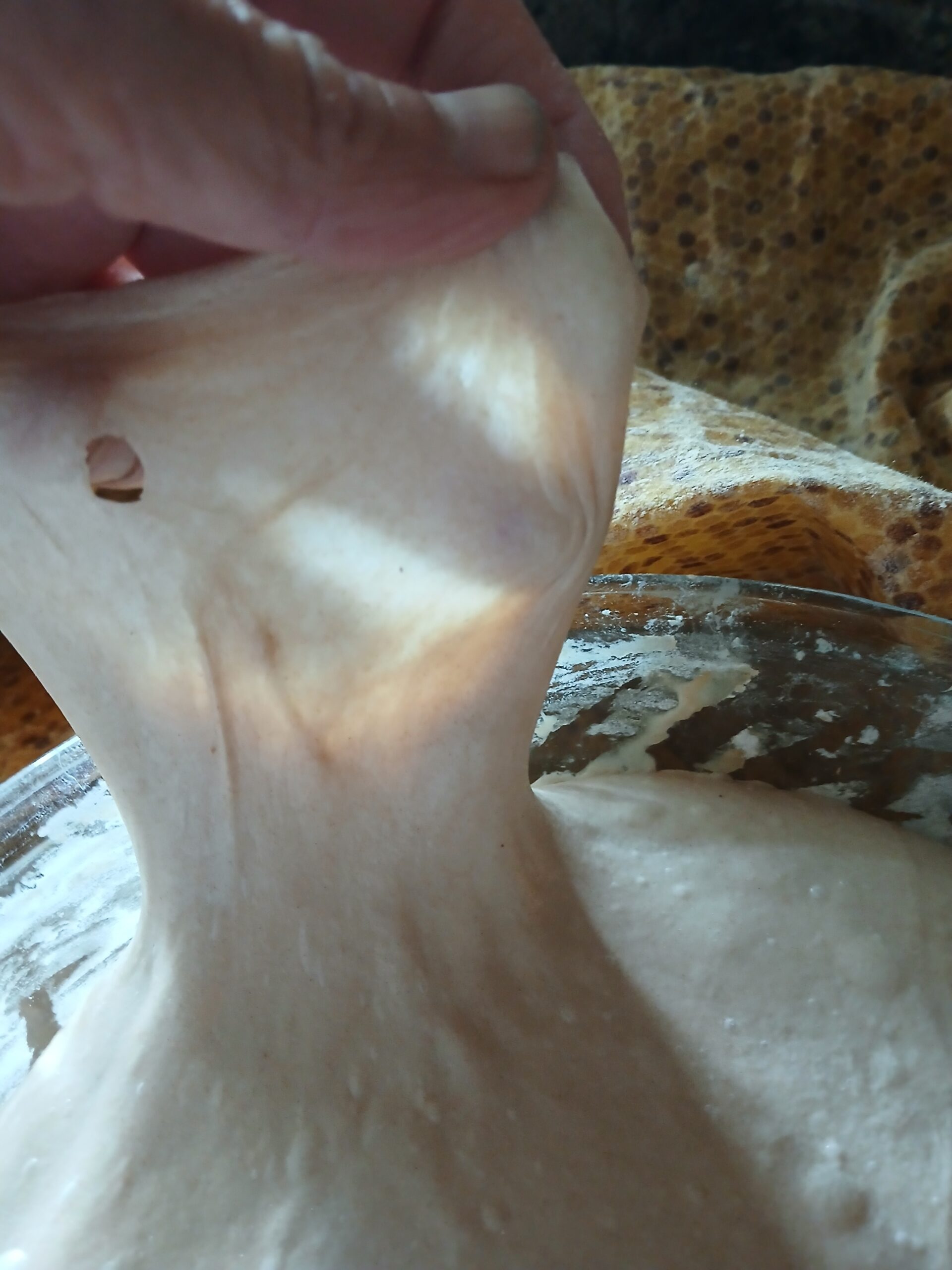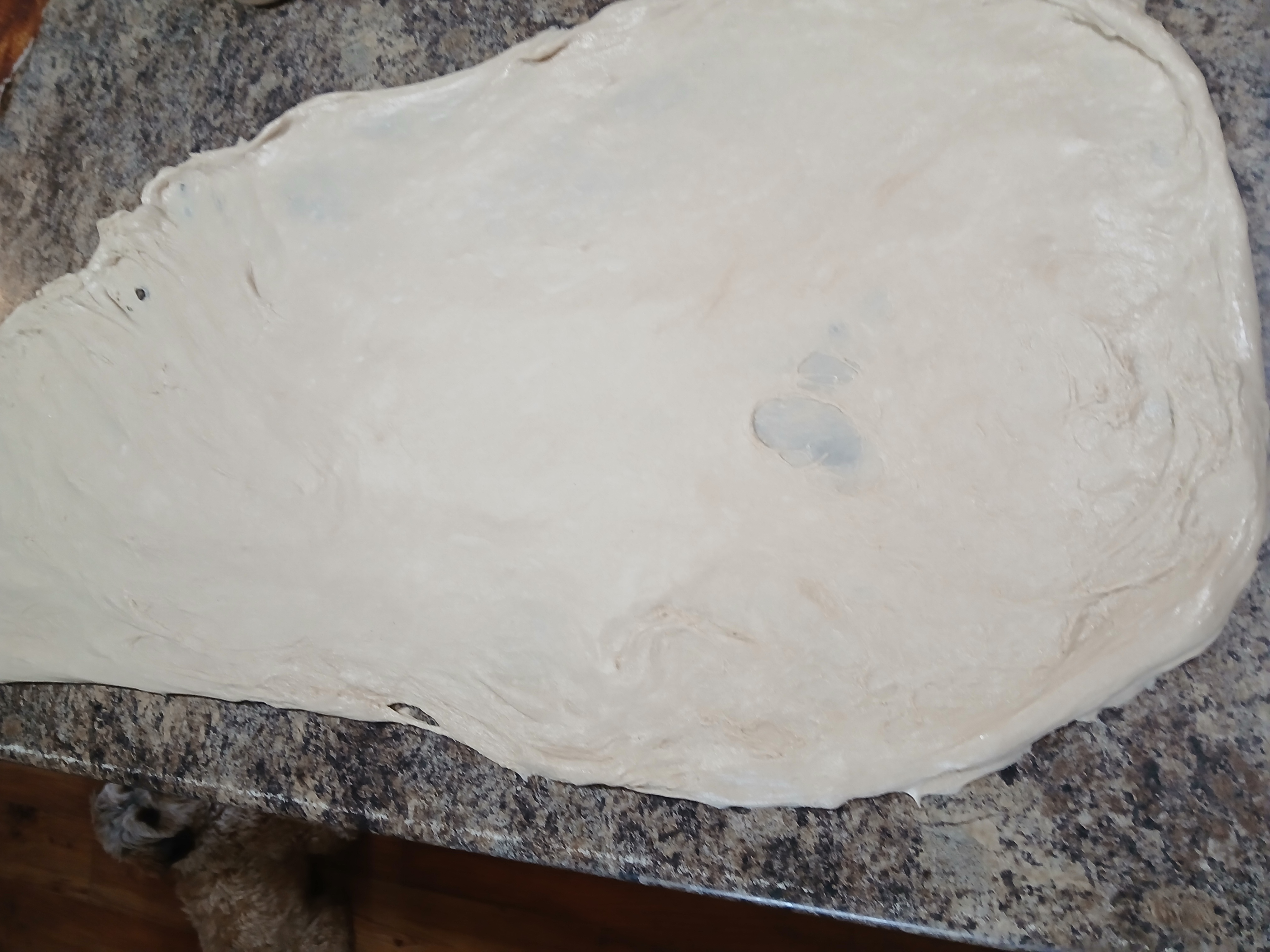Windowpane Test
You are probably familiar with the windowpane test when making bread, but if you are not, here is a quick explanation.
Why do the windowpane test?
The windowpane test is a way to test the gluten development in bread dough. This can be accomplished kneading by hand, kneading in a mixer, stretch and folds, coil folds, and slap and folds. Sometimes just letting sourdough sit long enough will develop gluten structure.
What is the windowpane test?
The windowpane test is done by stretching your dough thin until you can see light coming through like a window. If your dough breaks, the gluten is most likely not developed enough. This dough window should be able to stretch at least into a six-by-six inch window. If it can withstand this stretch, it has most likely been kneaded enough and the gluten is well developed.

(Gluten is not developed enough. The dough broke when stretched.)

(Fully develped gluten.)

(Dough stretched thin and doesn’t break. Nice gluten development.)
Why do this for sourdough?
When working with sourdough, the windowpane test allows one to know when gluten is fully developed. Since most sourdough recipes do not use much kneading, this is a good aid in judging when your dough is ready to go into the bulk rise. If it does not pass the windowpane test, do another set of stretch and folds, or coil folds and let it rest. Continue this process until it passes the windowpane test.
Happy Baking and enjoy the view through the window!
